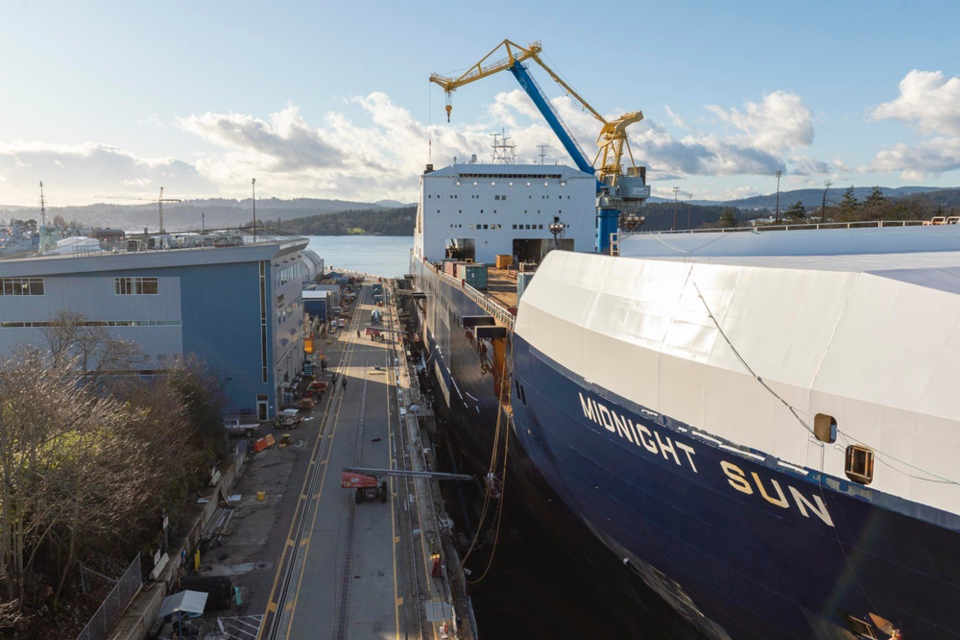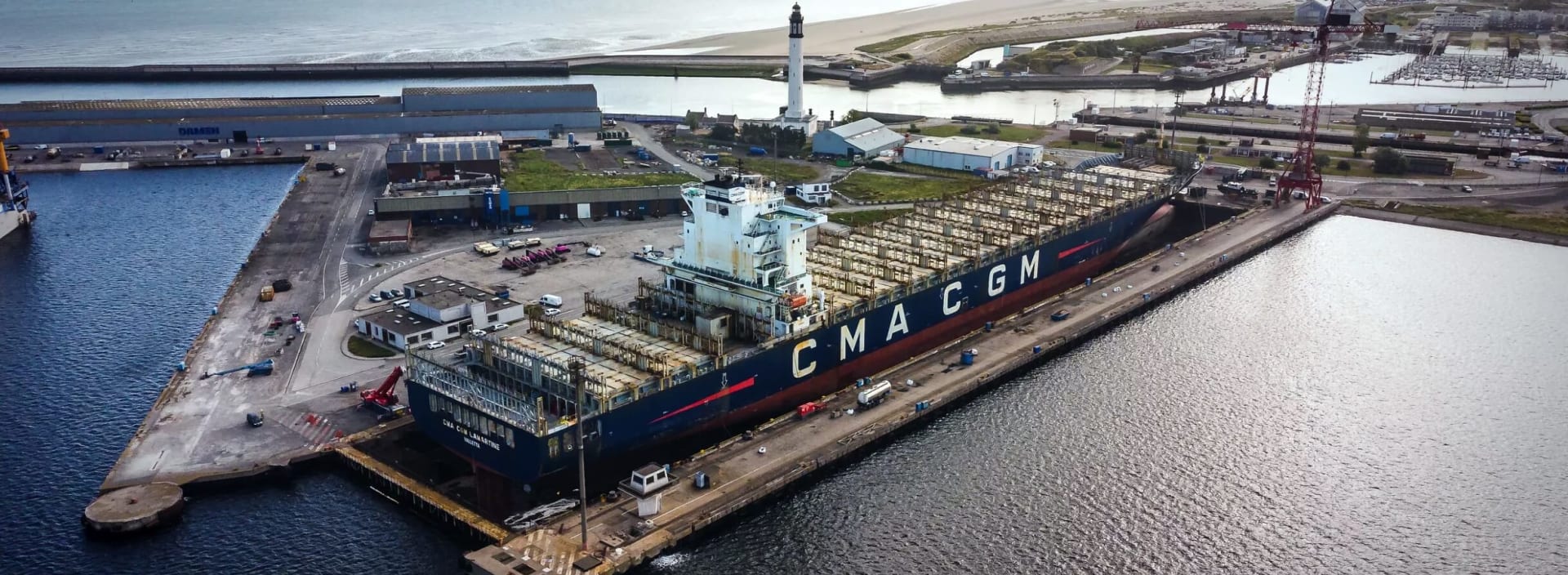Victoria Shipyards workers help fight climate change with LNG conversions

Tradespeople are currently undertaking the first conversion of a heavy ship on the west coast of North America
Victoria Shipyards is carving a new niche helping combat climate change – converting heavy transport ships to cleaner-burning liquified natural gas. Hundreds of skilled workers at the docks are currently undertaking the first liquified natural gas (LNG) conversion of a large ship done on the west coast of North America.
The project is just one of several streams of ship repair and building work the 11 unions representing workers at the Victoria docks are working on – while also looking at modules for land-based infrastructure projects and new training programs for marine trades.
Robert Taylor is the business manager of the Boilermakers Local 191, which represents welders, metal fabricators, and helpers at the shipyard. He says converting transport ships carrying essential products from heavy fuel oil (HFO) to LNG results in a considerable reduction in carbon emissions.
“Recent storms have emphasized how important it is to do our part in fighting climate change,” Taylor says. “Developing local expertise in LNG conversions here at Victoria Shipyards can be part of the solution while also creating good jobs in skilled trades.”
One of TOTE Maritime’s two Orca-class sister ships that ferry cargo between Washington State and Alaska, the Midnight Sun, entered the docks Dec. 12, 2021. Every second year it comes into the docks for routine maintenance, including painting and other work below the waterline that can only be done in a large drydock.
While maintenance work is underway workers with another union, UA 324, install the piping and plumbing necessary to carry LNG from onboard storage tanks to the engine. This process is the second of three phases needed to convert the ship to a cleaner-burning fuel. Workers with the Boilermakers 191 installed the tanks two years ago when the ship was in for maintenance. This phase connects to those tanks with further engine work to be completed at a later date. Once complete the ship will be dual-fuel, able to run on either LNG or HFO.
The ship’s sister ship, the North Star, comes into dock for maintenance on alternating years and is getting the same conversion work done.
Coordinating the work so conversions are done at the same time as maintenance minimizes the amount of time the ships are out of commission, ensuring the supply chain to and from Alaska isn’t interrupted. The two ships were built in 2003 specifically to ply Alaska’s rough seas and ferry a broad array of vehicles, dry cargo, refrigerated goods, groceries, and retail products to the northern state.
At the shipyard, the maintenance and LNG conversion work alone supports 600 jobs for the two months the ships are in dock. It’s the first time such large ships have been converted to LNG in North America. In the past, such work has gone offshore.
Victoria Shipyards is owned by Seaspan and operates within the Esquimalt Graving Dock, which is owned and operated by the federal government. It’s the largest commercial drydock with a solid bottom on the west coast of North America, giving it the capacity needed to bring large vessels into a dry area for painting and maintenance. It regularly hosts cruise ships, naval vessels, ferries, barges, and fishing boats.
The facility also has the big cranes and other equipment necessary to maintain and construct large vessels. The dock is currently being extended 60 feet, making it long enough to accommodate a naval frigate and cruise ship at the same time.
According to the federal government the dock employs about 3,500 people in “well-paying, highly-skilled jobs” while contributing about $400 million to Canada’s gross domestic product.
Ron Wickett is the business manager with the Machinists’ Fitters & Helpers Industrial Union Local No. 3, representing workers in shipbuilding and repair on Vancouver Island, and industrial manufacturing and supply. Its members include storemen, machinists, mechanics, millwrights, and first aid attendants working at the docks.
Wickett is the second of three generations in his family to work in skilled trades at the shipyard – starting with his father and now involving his sons at Victoria Shipyards.
“Ship-building is in our DNA in Victoria,” Wickett says. “Now, we’re getting on the map for LNG conversions.” He adds that BC Ferries has been converting some vessels to LNG, but performing the work in Poland. The unions would like to see that work done in Victoria and support local jobs.
In the past, the shipyard workers have built self-righting 47-foot Coast Guard rescue and marine lifeboats out of aluminum and the steel hulls for Orca-class naval vessels.
The unions would like to create more steady work at the shipyard by diversifying the jobs taken on - building more modules for terrestrial projects like bridges and tunnels, called pre-assembled Large Industrial Structural Skids.
“We’re building momentum,” Taylor says. “We appreciated the recent B.C. government announcement for shipbuilding strategy to bring long-term sustainability to this sector. At the end of the day, with these climate-driven disasters we are having, we have the expertise here and the big areas needed to lay down these structures and fabricate them. There’s a lot more to Victoria Shipyards.”

